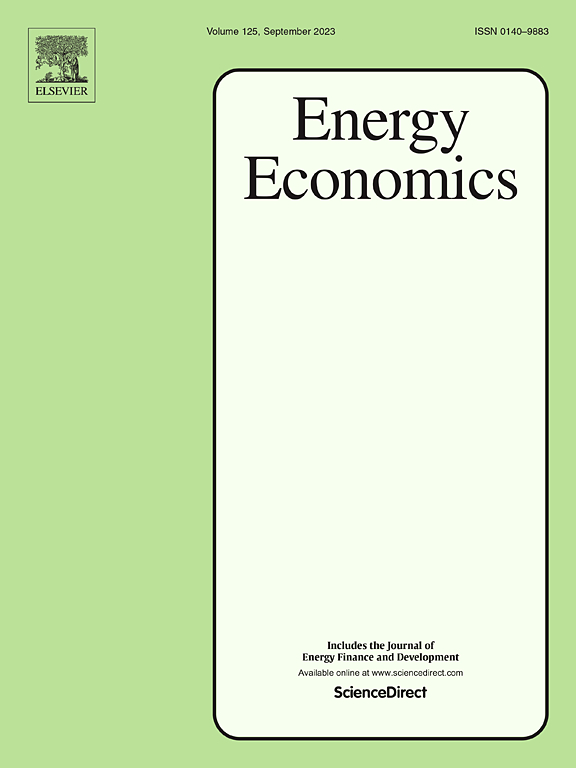Material balance and correction for the measurement of green total factor productivity growth
IF 13.6
2区 经济学
Q1 ECONOMICS
引用次数: 0
Abstract
In the measurement of the growth of green total factor productivity (GTFP), existing studies firstly need to measure environmental efficiency, where undesirable outputs are estimated based on the quantity of inputs using the material balance method. The material balance method not only makes it possible to derive undesirable outputs but also implies a constraint. However, existing studies have not considered this potential constraint when measuring environmental efficiency, which may result in GTFP growth measurements that violate the material balance principle. This paper improves the measurement of the growth rate of GTFP by incorporating material balance constraints into the environmental efficiency measurement method. Based on green cost function, a new method which is consistent with material balance constraints for measuring the GTFP growth rate is constructed. Empirical measurement of the growth of GTFP in power generation enterprises from 2009 to 2014 reveals that, without considering material balance constraints, the traditional GTFP growth measurement results do not align with the trends in the unit energy consumption of power generation enterprises. This discrepancy is corrected when material balance constraints are incorporated. The GTFP growth results based on the environmental cost function indicate that power generation enterprises focus more on improving cost efficiency rather than merely enhancing technical efficiency.
衡量绿色全要素生产率增长的物质平衡与修正
在衡量绿色全要素生产率(GTFP)的增长时,现有的研究首先需要衡量环境效率,其中使用物质平衡法根据投入的数量估计不良产出。物料衡算法不仅使得到不期望的输出成为可能,而且隐含着约束。然而,现有研究在测量环境效率时没有考虑到这一潜在约束,这可能导致GTFP增长测量违反物质平衡原则。本文通过将物质平衡约束纳入环境效率测度方法,改进了GTFP增长率的测度方法。基于绿色成本函数,构建了一种符合物料平衡约束的GTFP增长率测度方法。对发电企业2009 - 2014年GTFP增长的实证测算表明,在不考虑物质平衡约束的情况下,传统的GTFP增长测算结果与发电企业单位能耗趋势不一致。当纳入物料平衡约束时,这种差异得到纠正。基于环境成本函数的GTFP增长结果表明,发电企业更注重提高成本效率,而不仅仅是提高技术效率。
本文章由计算机程序翻译,如有差异,请以英文原文为准。
求助全文
约1分钟内获得全文
求助全文
来源期刊

Energy Economics
ECONOMICS-
CiteScore
18.60
自引率
12.50%
发文量
524
期刊介绍:
Energy Economics is a field journal that focuses on energy economics and energy finance. It covers various themes including the exploitation, conversion, and use of energy, markets for energy commodities and derivatives, regulation and taxation, forecasting, environment and climate, international trade, development, and monetary policy. The journal welcomes contributions that utilize diverse methods such as experiments, surveys, econometrics, decomposition, simulation models, equilibrium models, optimization models, and analytical models. It publishes a combination of papers employing different methods to explore a wide range of topics. The journal's replication policy encourages the submission of replication studies, wherein researchers reproduce and extend the key results of original studies while explaining any differences. Energy Economics is indexed and abstracted in several databases including Environmental Abstracts, Fuel and Energy Abstracts, Social Sciences Citation Index, GEOBASE, Social & Behavioral Sciences, Journal of Economic Literature, INSPEC, and more.
 求助内容:
求助内容: 应助结果提醒方式:
应助结果提醒方式:


